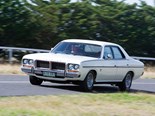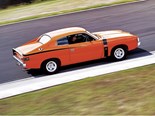Chrysler Valiant E55 Charger: Buyers' Guide















|

|

|

|

|

|

|
Dramatic styling lines don't always age well, but the Chrysler Valiant E55 Charger is an exception
Chrysler Valiant E55 Charger
For something that effectively began as a skunkworks project done on the fly, the Charger scored incredible success and retains phenomenal cultural traction among petrolheads. Chrysler Australia Managing Director David Brown is credited with the birth of the Charger line, rightly anticipating the likelihood that the upcoming VH series of land yachts had little youth appeal.
Some $2 million of a $22 million develop budget was skimmed off for the project, a pittance in car development terms. It was done in great secrecy, at least at first, with even Chrysler USA being kept in the dark until the Charger was down the development trail. To save costs, the new model shared front panels with the VH series sedan and doors were donated by the Chrysler by Chrysler Hardtop. Wheelbase was down from 111 inches (2819mm) to 105 (2667).
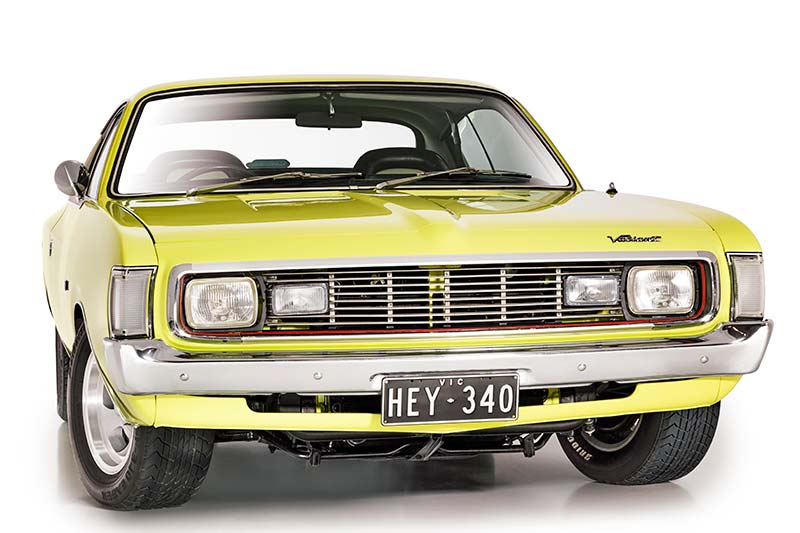
The idea of a short wheelbase coupe was first mooted in November 1969 and full-size clay model was completed by February 1970. Initial mechanical and chassis testing was done using a couple of specially-built utilities (a VF and a VG), both of which are said to survive today. What would they be worth now? Move on to August and a hand-built prototype is being tested.
By 1971, the end result had scored Wheels Car of the Year, only the second such award for Chrysler Australia. It was a runaway sales success – unlike the VH sedans and wagons – and was soon proving an inline-six powered car could give the more fancied V8s a big scare on the racetrack.
Inevitably Chrysler looked for ways to broaden the Charger ‘palette’, and one was to introduce a GT-style variant with a V8 in the snout. By then we had already seen the 318 V8 in front of a 770 Charger, but this was a step up again. In October 1972 Chrysler quietly announced the E55, featuring a 340 small block in the nose matched to an A727 Torqueflite auto. While this engine had a race heritage in the USA, here it fed through a single four-barrell carburettor and claimed an understated 275hp.
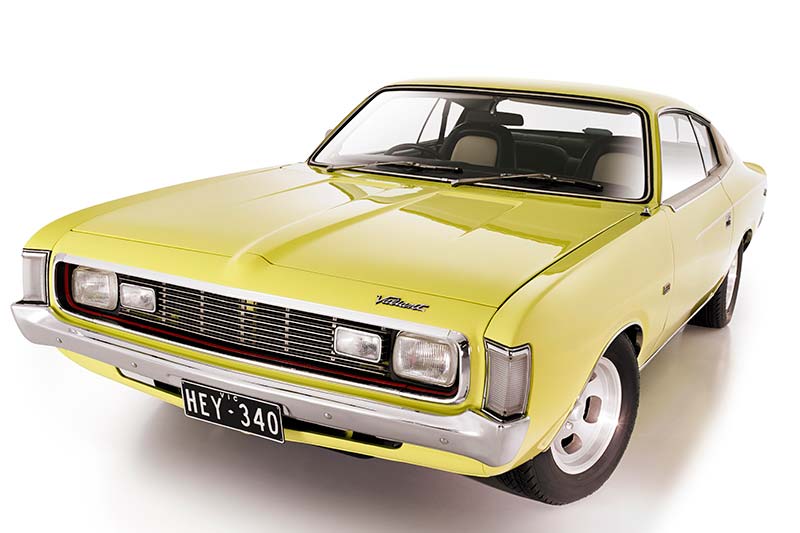
The production version was really intended as rapid and comfortable transport, rather than a race car, though things could have turned out very differently. Chrysler did in fact run it against an E49 at Mallala and discovered it was a few seconds a lap down on the six. However there was talk of hotting up the 340 and developing it with a four-speed manual transmission for Bathurst – where the E49 struggled against the Holden and Ford V8s – but that program was cancelled with the supercar scare of the same year. This is as close as you’ll get to the would-be competitor to the Ford Falcon GT-HO Phase IV.
Stuart Morgan and brother Sean collect Chryslers (among others) with their father Gordon. "My father always had new Chryslers – it’s what you grow up with and then you get to a stage of life where you can revisit your childhood, a nostalgia trip.
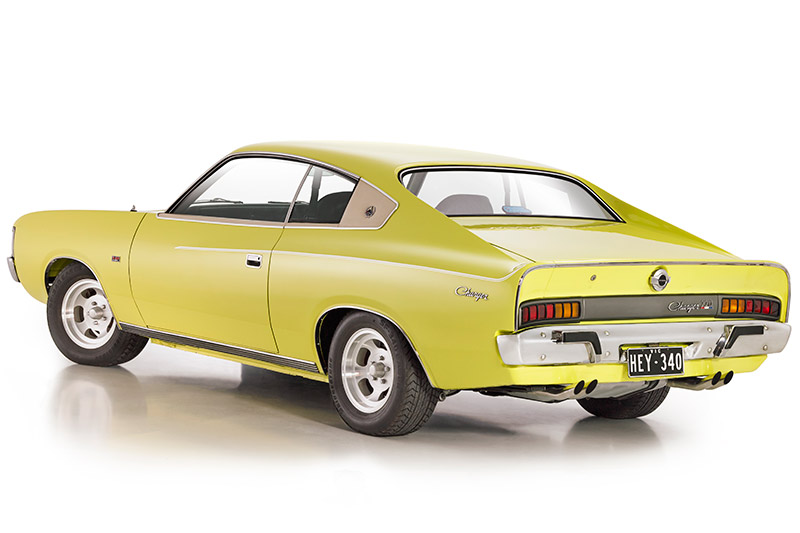
"I like the Charger, just the look of it, so unusual, like nothing else at the time in two-door cars. It was a true two-door sports car for the time with that Chrysler American V8. The colour combination stands out now. For me there’s a visual appeal you don’t see now. It screams seventies!"
What’s it like to drive? "It was a simpler time and the cars were simpler, but it has a lot of the functionality of a modern car. It has air conditioning, it’s an automatic, you could drive it every day if you wanted to but it’s still got the styling.
"It’s a very individual car, nothing else looks like it, and I think we’ve lost a lot of that in our modern cars."
VALIANT E55 CHARGER MARKET GUIDE
OPINION WILL probably always be divided on how well a four-speed, 5.5-litre V8 Charger might have gone against Toranas and GT Falcons in the annual 1000km stoush at Bathurst. However it never got the chance and that rates high on the list of reasons why E55 Charger values have always lagged behind those of E38 and E49 cars.
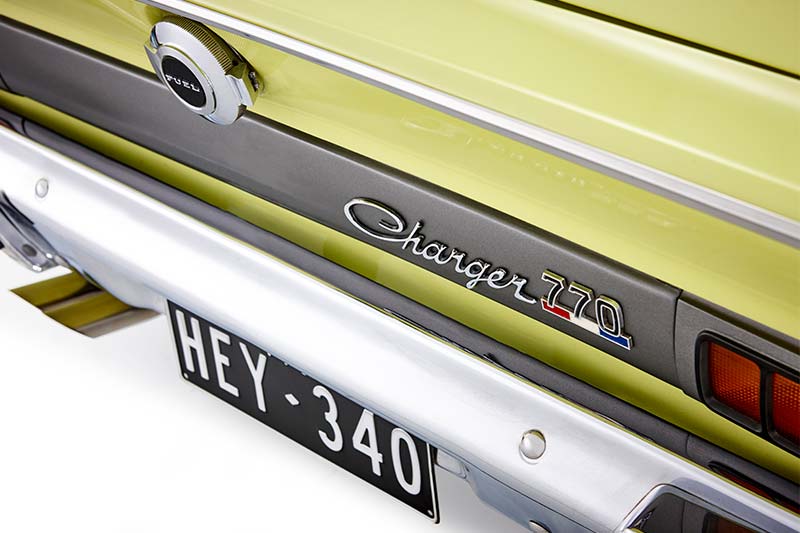
It is hard to judge just how much a buyer would be prepared to spend on an outstanding and authentic E55. Informed estimates in 2016 range from $65-85,000 – but to achieve top money the car needs to be absolutely authentic and excellent.
With only 127 genuine E55s made they won’t be popping up for sale every second week. Setting up alerts on specialist car-sales sites will help, however you are better served by joining a Charger club and visiting every Mopar display you can. Some owners won’t even be club members but that’s where they tend to look for advice on selling a car that might have been unseen for decades.
2016 VALIANT VH-VJ CHARGER E55 VALUE RANGE
FAIR $20,000
GOOD $45,000
EXCELLENT $75,000
(Note: concours cars may demand more.)
BUYER'S CHECKLIST: 1972-73 VALIANT VH-VJ E55 CHARGER
Body & Chassis
Sadly for 21st century enthusiasts, E55s were not always treated kindly during their early years. Neglect frequently manifested as serious rust leading to the car being scrapped as an alternative to big repair bills. Some would have been cheaply repaired and any E55 showing bumps and bubbling to the panels or odd paint patterns needs a professional inspection. Dropped doors may need welding around the hinge mounts. Crash damage is another issue so examine the inner mudguards for rippling and the chassis rails for kinks or welds where there should be none. Rust repair panels for Chargers are being manufactured.
Engine & Transmission
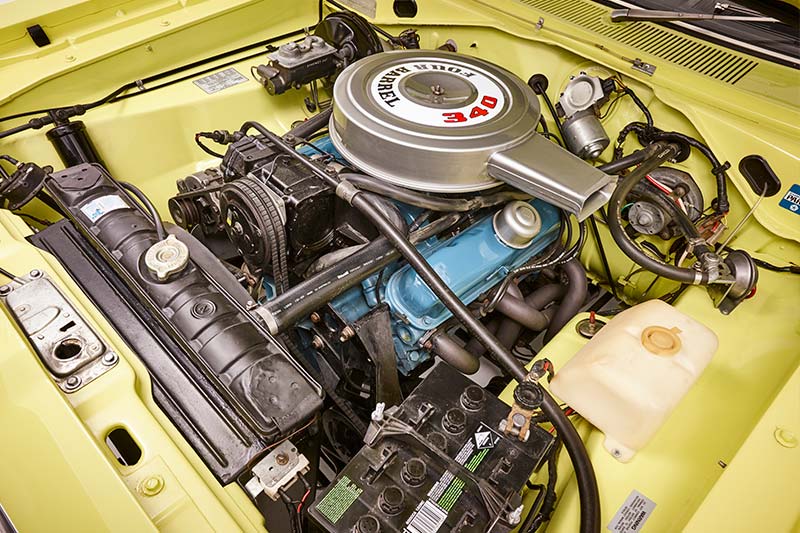
The 340 cubic-inch Chrysler V8 is highly regarded as an engine capable of delivering prodigious performance for its size. These motors were used in many US Mopar models and complete ‘crate’ replacements are easy to obtain. So are parts needed to rebuild an existing engine and maintain authenticity. An authentic engine will carry a number commencing with ‘A331’.Depending on model, E55s will use different types of Carter four-barrel carburettor. The three-speed automatic transmission should handle the power of a standard 340 with ease and 300,000 km between rebuilds is expected.
Suspension & Brakes
Charger V8s need to cope with more front-end weight bias than six-cylinder cars, so expect to be replacing components more regularly. The steering in these cars was never particularly direct and they do tend to veer in the direction of the road camber unless drivers maintain a firm grip. Be wary of ‘slop’ in the steering and excessive effort at low speeds. Be cautious when test-driving a Charger as they are known for locking wheels without a lot of pedal pressure being applied. If the pedal feels very hard or very spongy start looking at the master cylinder and/or power booster. Neither are particularly expensive.
Interior & Electrics

The two-toned seat trims may well have been replaced at some point during the past 44 years but won’t be too difficult for a competent trimmer to duplicate. Make sure the seats can be easily moved on their runners. The ‘turned’ metal inserts that slot into the dash and console will be more difficult to restore or replace if missing. Excellent examples of the distinctive Charger steering wheel pop up fairly often in the parts market but have $500 in
your pocket when trying to buy one.
SPECIFICATIONS
Chrysler Valiant E55 Charger
NUMBER MADE: 127
BODY STYLES: Steel integrated body/chassis two-door coupe
ENGINE: 5571cc V8 with overhead valves & single downdraft carburettor
POWER & TORQUE: 206kW @ 5000rpm, 460Nm @ 3200rpm
PERFORMANCE: 0-96km/h 7.2 seconds, 0-400 metres 15.6 seconds
TRANSMISSION: Three-speed automatic
SUSPENSION: Independent with torsion bars control arms and anti-roll bar (f) Live axle with semi-elliptic springs and telescopic shock absorbers (r)
BRAKES: Disc (f) drum (r) power assisted
TYRES: ER70H14 radial
Unique Cars magazine Value Guides
Sell your car for free right here
Get your monthly fix of news, reviews and stories on the greatest cars and minds in the automotive world.
Subscribe

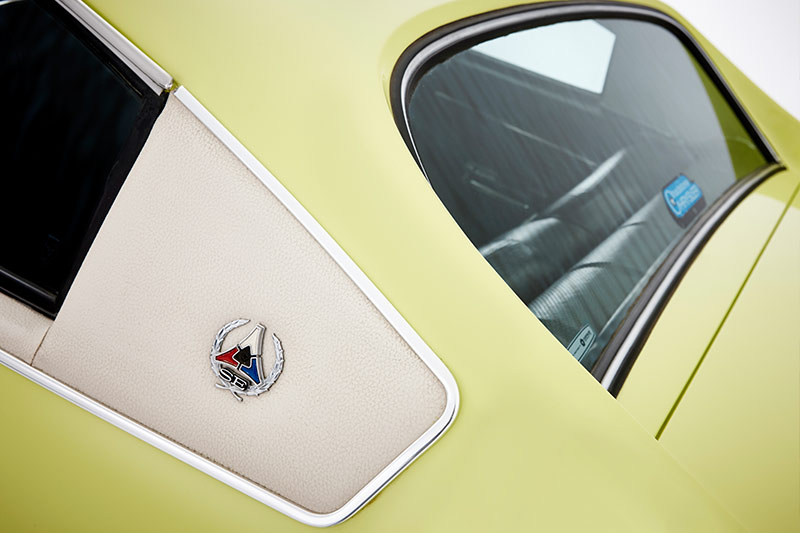
.jpg)



.jpg)



